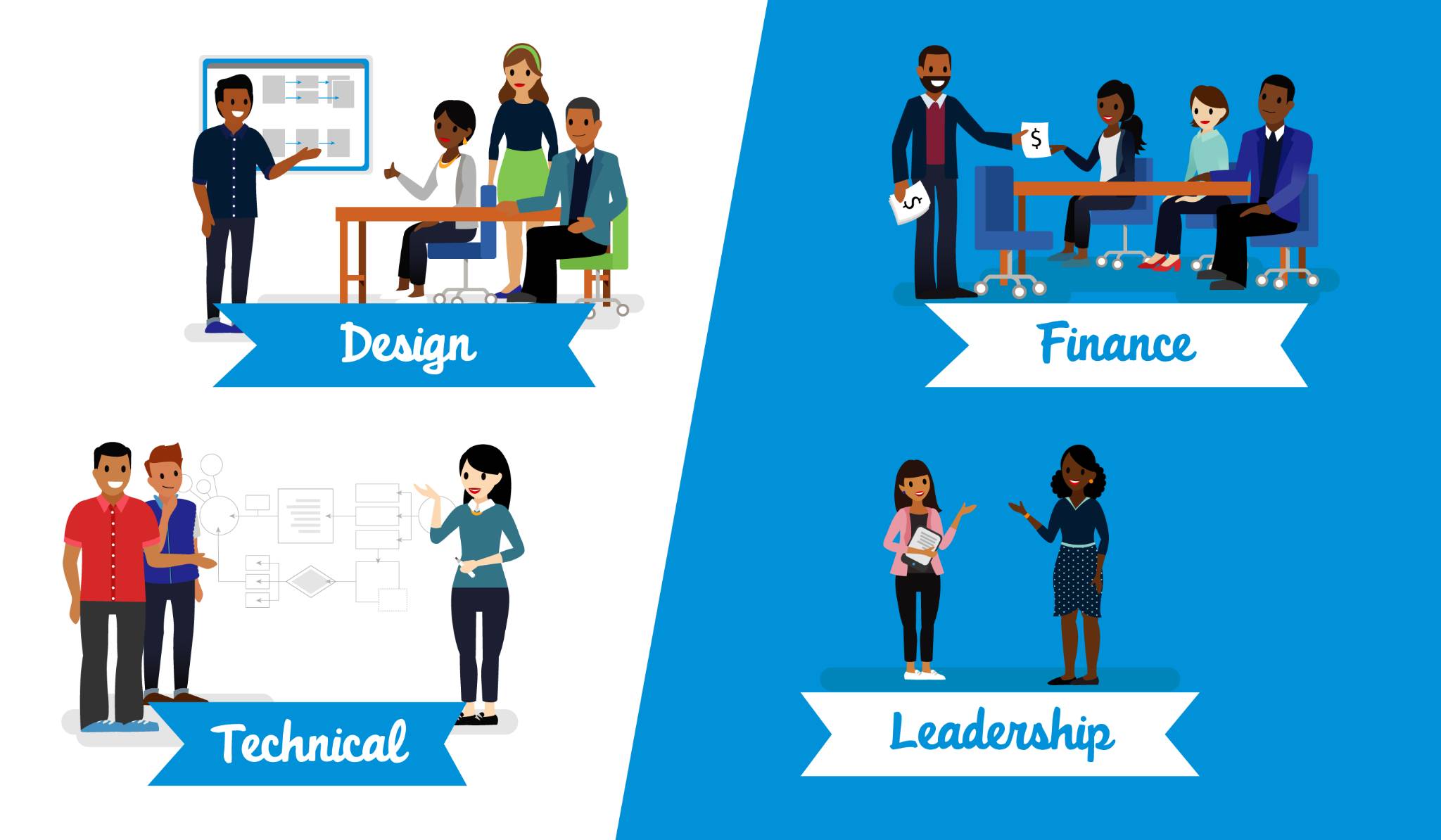Learn About Ecosystem Mapping
Learning Objectives
After completing this unit, you’ll be able to:
- Describe the ecosystem mapping process.
- Explain why ecosystem mapping is a key part of bringing a new idea to market.
- Identify champions in your ecosystem.
- Identify detractors in your ecosystem.
Ecosystem Mapping
Now that you know why it's important to design beyond the protagonist, how can you align your organization behind this principle to bring an idea to market? Ecosystem mapping.
Ecosystem mapping is a process used to capture all the key groups that influence a product or service, including:
- Internal teams across different functions, such as design and technical teams
- Internal teams removed from the product development process, like finance
- Executive leadership

By mapping out these key people and their relationships to a product or service, designers and product teams can identify the challenges to a successful product or service launch. This includes considering social dynamics that will help gain support for their new product or service.
How It Works
You can begin the ecosystem mapping process by creating a list of the key people and groups involved in moving an idea forward, including:
- Decision-makers—project sponsors who decide whether or not to greenlight a project and approve decisions about how it will work, feel, and look, and how the organization will support it.
- Influencers—internal individuals with the power to shape how an idea is received.
- Other key individuals and groups—customer service teams, the makers/builders shaping the project, and others affected by the product or service.
Once you’ve identified groups or teams on the list, identify people who are most important to the success of your project within that group or team. That’s where you’ll focus your efforts.
Understand Your Stakeholders’ Motivations
Next, list out the stakeholders’ major motivations and goals as they relate to this project. For example, if one of the key decision-makers on a project is a new vice president, they may be looking to establish themselves in their role. They might want to lean into this project as a way to accomplish this.
Once stakeholders’ motivations are mapped, create a color-coding system to reflect your understanding of stakeholders’ feelings about the project. For instance:
- Use red if an individual is hesitant to get involved with or support the project.
- Use yellow if an individual is neutral about the project.
- Use green if an individual is a supporter of the project.
Next, take a step back and look at the information you just captured. The stakeholder mapping exercise should already reveal some insights, including:
- The number of stakeholders you have. Is this number surprising, and does it feel well-matched with the level of change you’re proposing?
- How the stakeholders feel about the project. Are the stakeholders in green, yellow, or red? Do you have a lot of alignment work ahead of you?
- Patterns around people’s concerns. Can you spot a weakness in your concept or the story you’re telling about it?
Finally, use this information as guidance on how to engage with stakeholders. If stakeholders:
- Struggle with why you want to take on this project, help them understand more clearly by connecting the dots between project goals and their high-level strategic goals.
- Have concerns about viability, demonstrate the project’s long-term value through related case studies.
- Want to understand more about how the project contributes to customer success, leverage user research to help them understand the need for action and innovation from your customer’s point of view.
- See the need but aren’t entirely convinced that you have the experience to deliver the solution, prototype the features they’re concerned about, or work with them to find a mutually agreed-upon solution.
When teams use this tool, they consider diverse vantage points involved in bringing an idea to market. This means that leaders can plan and prepare their teams for the work to come when it's their turn to participate. It also means they won’t be surprised by an objection or concern late in the design and build process when it’s harder and more expensive to change plans.
Champions and Detractors
If stakeholders fall under the green category using the color-coding system suggested above, they are champions of the idea or project. On the other hand, if they fall under the red category, they may be detractors—someone who’s unsupportive of a project or idea.
Detractors are not necessarily always a negative thing. If people are not supportive of an idea or express concerns about an aspect of it, you can imagine that other people may share the same concern. Your detractors are doing you the favor of raising challenges you need to solve. Taking their critiques to heart and even involving your detractors in helping you solve their concerns is a great way to convert a detractor to a champion. Of course, not everyone will become a champion. It’s important to understand whose support you need and have realistic goals for getting it.
Next, we look at a process organizations can use to mobilize internal teams and individuals around an idea: building a coalition of the willing.